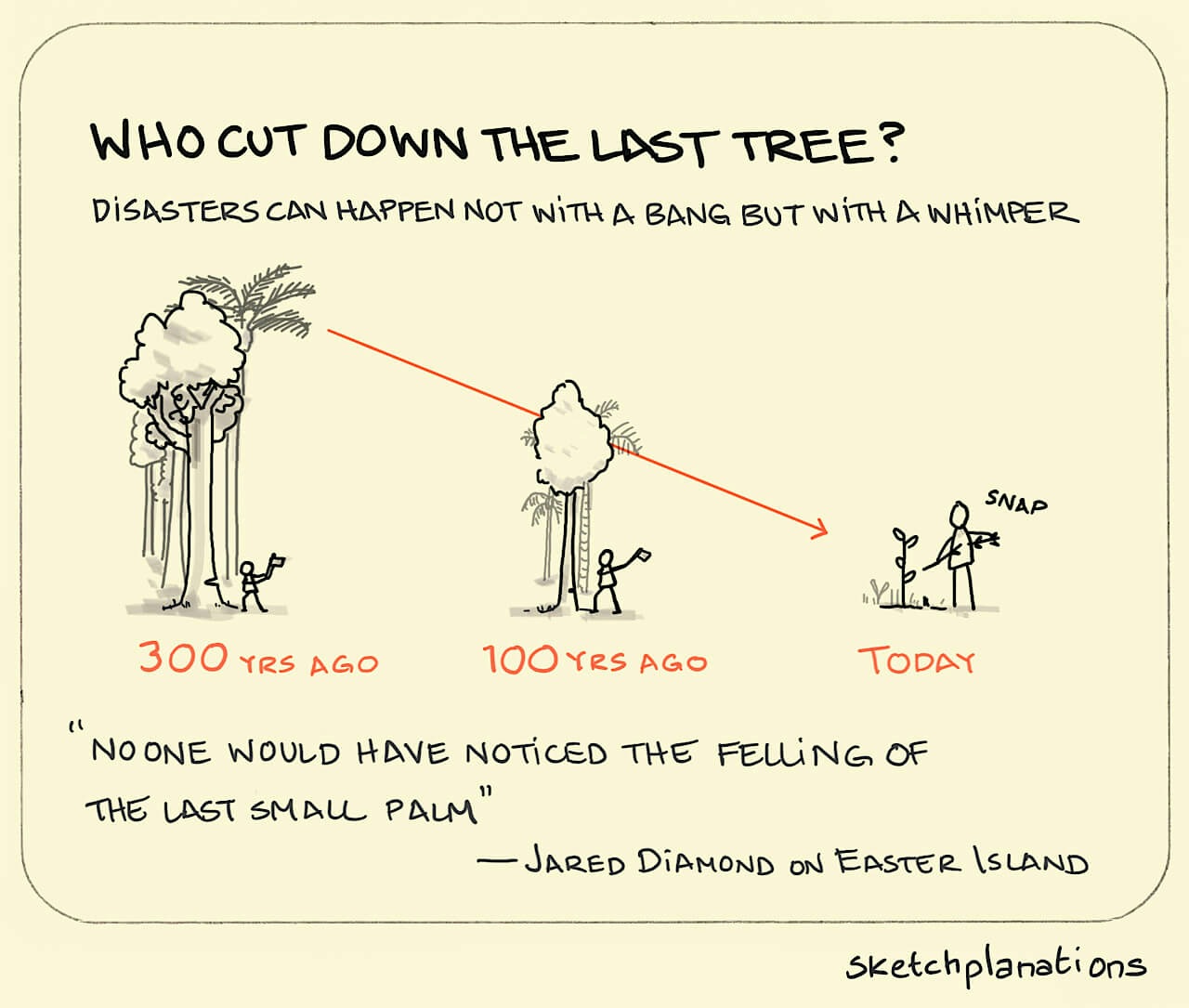Who cut down the last tree?

- Copied!
👇 Get new sketches each week
If you lived on Easter Island, would you really cut down the last mighty tree knowing that would be it? It seems either foolhardy or desperate to knowingly cut down the last of a kind and your last source of timber. So how could it happen?
Easter's End
Jared Diamond, in his book Collapse and article Easter’s End , explains how this situation could happen through a gradual, hardly noticeable decline over many years. Those who remembered the great trees that they used to make rafts, canoes, and ships were old or had long since died. Today's trees may be nothing like the forests and towering trunks of tens or hundreds of years ago.
As Jared puts it:
"Gradually trees became fewer, smaller, and less important. By the time the last fruit-bearing adult palm tree was cut, palms had long since ceased to be of economic significance. That left only smaller and smaller palm saplings to clear each year, along with other bushes and treelets. No one would have noticed the felling of the last small palm."
An alternative Easter Island history
More recently, I read Rutger Bregman's story of Easter Island in his book Human Kind: A Hopeful History . In the chapter "The Mystery of Easter Island," he digs into the reconstruction provided by Diamond and others and questions whether the Easter Islanders really were reduced, after losing their trees, to infighting and destitution.
Bregman found evidence to suggest that rather than driving themselves to the brink of extinction, the Easter Islanders were likely still thriving when Peruvian slave traders arrived in 1862, and sixteen slave ships carried off a third of the island's population, 1,407 people.
Yet the worst for them was still to come a year later when the government was pressured to return the islanders home. A smallpox outbreak carried by the returning islanders wreaked devastation during the voyage, with hundreds dying at sea. The 15 islanders who made it home carried the virus with them, and it spread to the inhabitants who remained. He cites that the population was reduced to just 110 inhabitants in 1877 when the epidemic finally subsided.
Until the arrival of the slave ships, the population, despite their trials, was still thriving. Bregman suggests that it was, in fact, contact with the rest of the world that destroyed Easter Island.
For another thought-provoking perspective, Seth Godin asks who cut down the second-to-last-tree?

